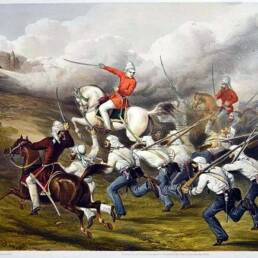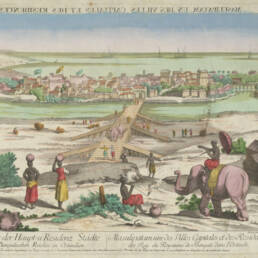Badluram ka Badan
A fallen soldier and myth of a regimental song
Very recently, when a triumphant Saikhom Meerabai Chanu returned home from Tokyo (Olympics) after winning a silver medal in weightlifting, she was welcomed at the Imphal airport by an army posse with the band loudly playing the regimental song. If you could decode the lyrics of the song they were playing, it would go like this:
Ek khubsurat ladki thi
Usko dekh ke rifleman
Chindi khichna bhul gaya
Havaldar Major dekh liya
Usko pittu lagaya
Badluram ek sipahi thaa
Japan war me mar gaya
Quartermaster smart thaa
Usney ration nikala
Badluram ka badan zamin ke nichey hain
Toh humein uska ration milta hain
Sabashh… hallelujah…
Toh humein uska ration milta hain…
If you are scratching your head after reading the above lines, wondering what this gibberish is, I wouldn’t blame you. After all, it is unlikely that you, or anyone for that matter, would guess that the above lines are excerpts from the song of a proud and fierce regiment of the Indian Army that first found fame in World War II.
In 2013, UK’s National Army Museum chose the twin battles at Imphal and Kohima in the summer of 1944 as the Greatest Battle in the history of Britain. Just like Stalingrad was the vital turning point of the war in Europe, it was the unbelievable bravery of the British Indian army in the hilly terrains of India’s north east that thwarted the progress of the Imperial Japanese Army and shifted the momentum of the Asian campaign in favor of the Allies, hastening the end of the war.
Kohima, at present the capital of the Indian state of Nagaland, was located at the summit of a pass that offered General Mutaguchi’s Fifteenth Army the best route from Burma into India. In late March, the Japanese forces cut-off the Imphal – Kohima road and by the start of April, laid siege to the town of Kohima. The main defense of the town was in the form of the 1st battalion of the Assam Regiment, raised just three years earlier, supported by the 4th battalion, The Queen’s Own Royal West Kent Regiment and a few platoons of the paramilitary Assam Rifles. Facing this hastily assembled defensive formation of roughly 2500-men was a 15,000 strong, well armed and stocked Japanese force. Despite their incredible numerical inferiority, the British and Indian soldiers put up a brave rearguard, resulting in a bloody close combat fighting and heavy casualties. One of the early casualties in this fighting was a rifleman by the name of Badluram.
Here is where the story takes an interesting twist. Apparently, the quartermaster^, who was entrusted with keeping tabs of the soldiers, missed reporting his death. It is unclear whether this was an honest mistake – not improbable in the terrible situation the regiment was faced with – or a smart call by the unnamed quartermaster. Whatever it may have been, his miss – by omission or commission – would have a dramatic impact in the future events that followed.
With supplies scarce, the battalion had to be satisfied with minimal rations. However, with Badluram’s death not reported, his share of food, provisions and water continued to be drawn from the mess. This would prove critical when the battalion was completely surrounded. With supply lines cut off, it was the excess supplies that had been drawn in Badluram’s name that now came to the rescue of the beleaguered force, sustaining them through the days when all hope seemed lost. The song probably came into being during those days, when the morale must have been at its lowest and these simple lines would have gone a long way in boosting spirits.
Hope was finally delivered in the form of the reinforcement from the British 2nd division, who broke through the blockades reaching Kohima on 18th April, 1944. Although the battle raged on for more than a month from there on, it was the Japanese who were now increasingly on the defensive and finally started retreating by mid-May. It was the beginning of the end for Imperial Japan. Assam Regiment earned battle honors for their incredible rearguard in Kohima.
In 1946, Major M.T. Proctor created the song “Badluram ka Badan” as the regiment’s official song, inspired by and set to the tune of “John Brown’s Body.” Till date, this song continues to be the song of this proud regiment that has continued its glorious journey post-independence and into the new millennium, becoming an integral part of its identity.
The tale of Badluram may or may not be 100% historically authentic and accurate. Yet, inherent in it lies a deep message. One of brotherly love and supreme sacrifice. It is in effect a homage by a group of men to their fallen comrades, who did not survive to witness the glorious victory.
The fallen of the Battle of Kohima are laid in the War Cemetery there. The lines on the famous epitaph there are credited to English classicist John Maxwell Edmonds. Its evocative lines go,
“When you go home, tell them of us and say
For your tomorrow, we gave our today.”
Notes:
^ Quartermaster: In terrestrial armies, a quartermaster is generally a relatively senior soldier who supervises stores or barracks and distributes supplies and provisions








